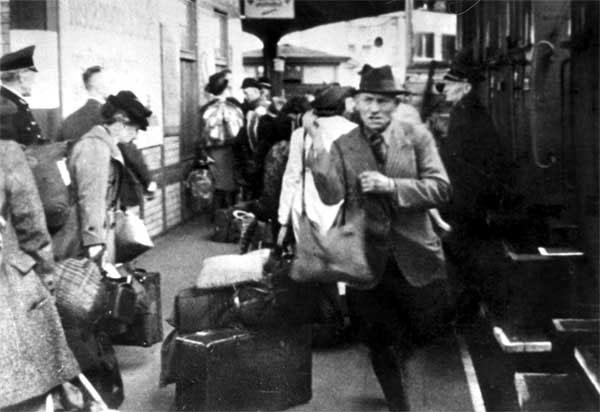The anti-Jewish policy of the first six years of the Nazi regime resulted in the German Jews’ being segregated, isolated from society and impoverished. After the beginning of the war in 1939, a series of new decrees were enacted against the Jews in Germany. They were placed under night curfew, they received only restricted ration cards, no allotments of clothes, they had to moved to marked Jewish houses, they were forbidden to use public transportation and telephones, and as of September 1941 they had to wear the yellow star. One month later, in October 1941, emigration of Jews from Germany was prohibited and the deportations to the east began, first to, the ghettos of Eastern Europe, and eventually to Theresienstadt and the extermination camps. Approximately 140,000 German Jews were murdered in the Holocaust.
By 1943 the German public was well aware of the murder of the Jews. Strangely enough no law was enacted in Germany against helping Jews; there was only a decree of 1941 that forbade displaying friendly relations with Jews. Individual support of Jews was usually considered as Judenbeguenstigung (aiding and abetting Jews). These offences were dealt with by the Gestapo, as per an ordinance of the Reich Security Main Office of 24 October 1941 that said that whoever maintained friendly relations with Jews in public was to be taken into Schutzhaft (protective custody – a form of detention that was extrajudiciary) and imprisoned for up to three months in a concentration camp. In other cases if help to Jews, such as document forgery or illegal border crossing, included the breaking of existing laws, they persons responsible could be charged by the special courts that were political instances charged with dealing state enemies.
Fear of punishment however was not the only deterring factor. Mostly rescuers had to thwart the general moral collapse that enveloped German society. German propaganda, which depicted the Jews as enemies of the state and blamed them for the war, strongly influenced the majority’s attitude towards the Jews. Thus rescuers and the rescued lived under the constant danger of denunciations by neighbors – a widespread phenomenon in Nazi Germany.

